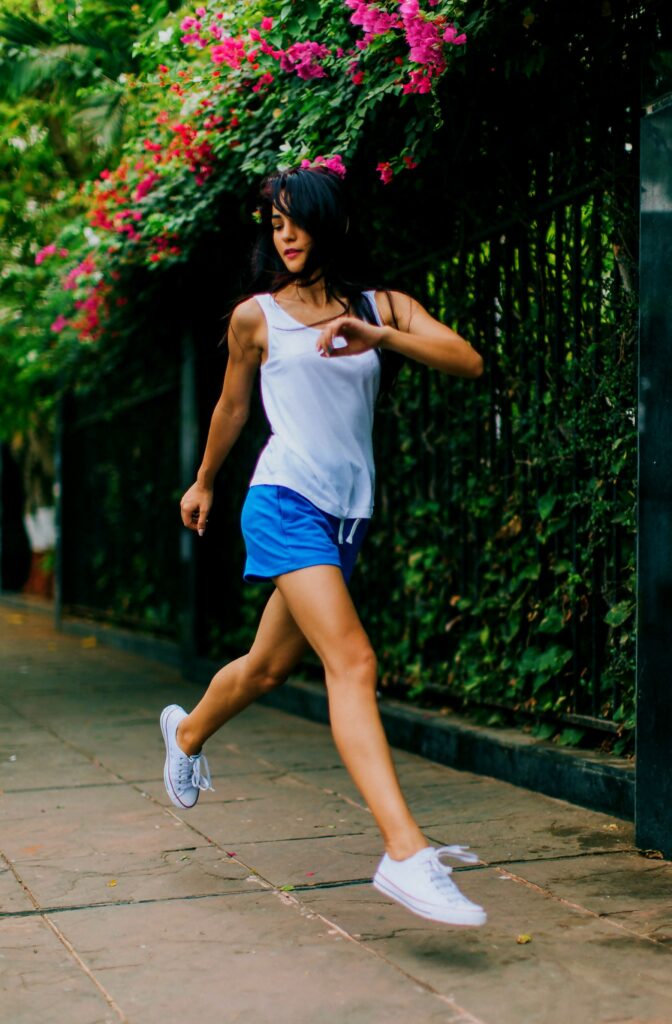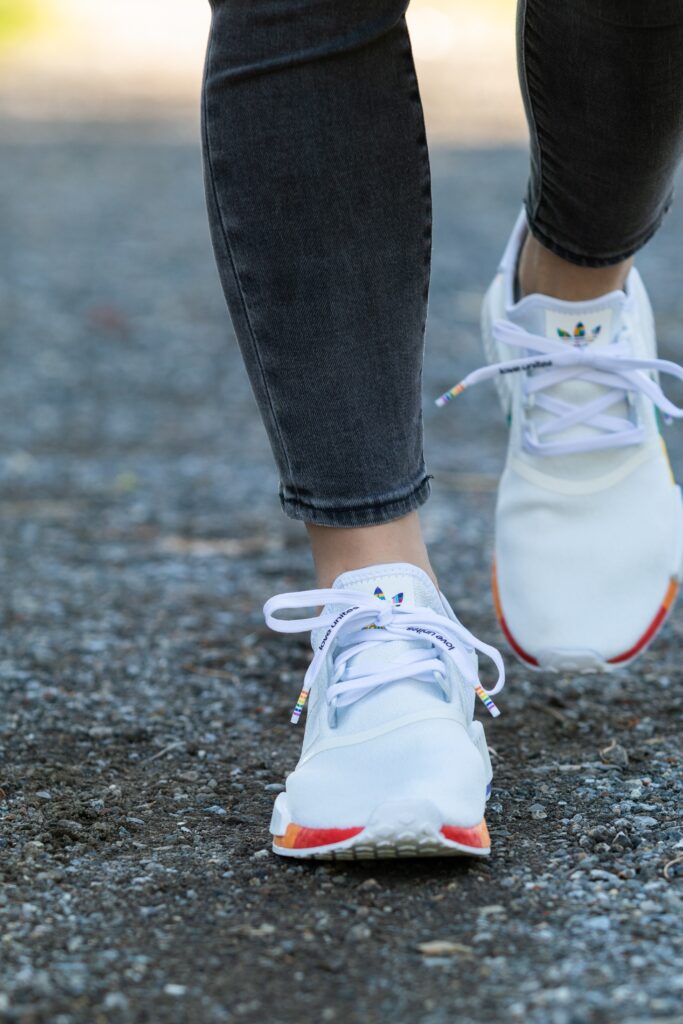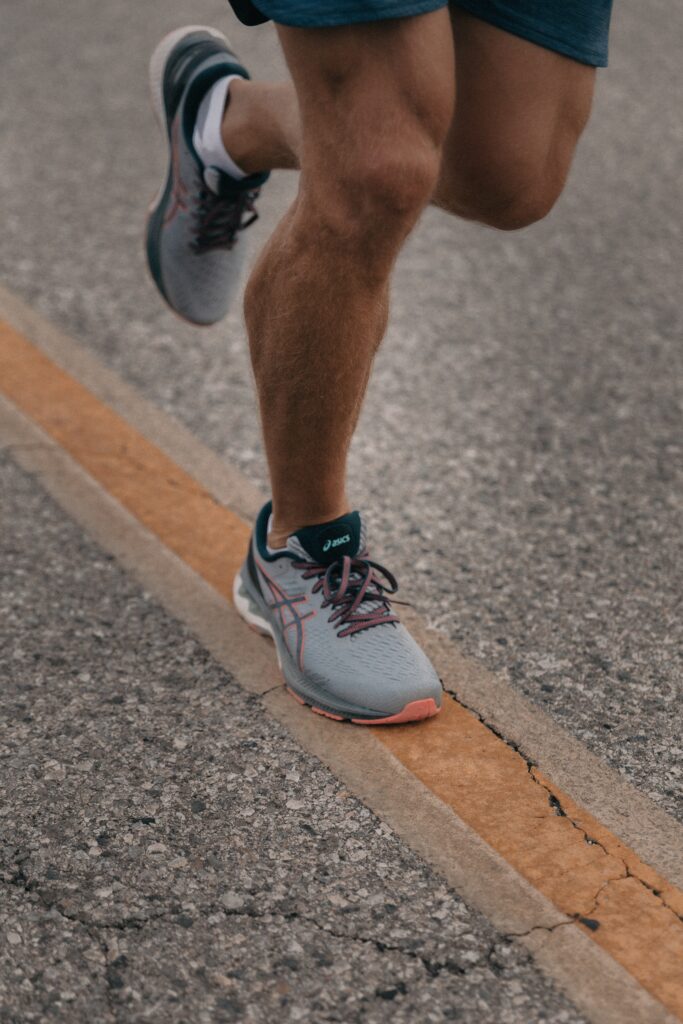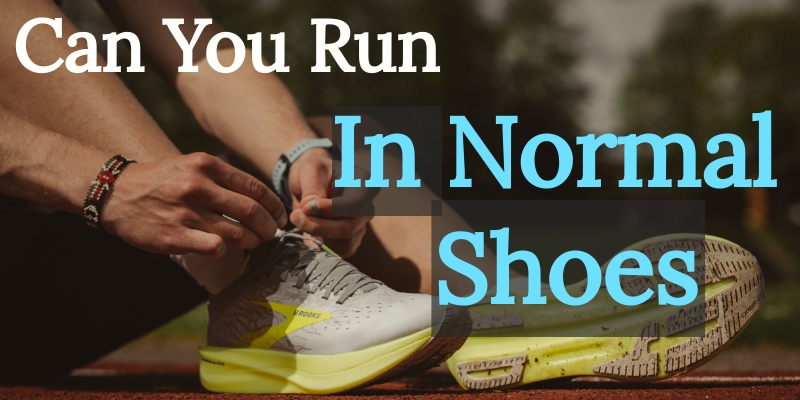If you ask a runner about any topic related to what they love doing, they will always have a strong opinion about it. The most contested topic in the world of running has to be shoes.
There are so many options when it comes to shoes. You could go for a pair with elevated heels or even advise yourself to run in your normal shoes.
But can you run in your normal shoes? To answer this question, we must understand the difference between running shoes and normal shoes.
What is a normal/walking shoe?

Walking shoes are designed in a way that offers comfort when you wear them. They do not favor performance as not much technology has been invested in manufacturing them. If you are looking for a comfortable pair of shoe that goes well with your desire to take short walks and strolls seamlessly, walking shoes will work just fine.
If you walk for fitness purposes, you need a flat, lightweight and flexible shoe because of the way they exert pressure from the hell and roll as you take every step.
If you want to use normal shoes for running purposes, analyze their designs thoroughly. Many normal shoes are made using heavy and stiff material. All you will achieve by running with your normal shoes is slowed motion and a negative effect on the way your foot moves on the ground.
The few choices of suitable walking shoes makes many fitness walkers to look up to running shoes because they meet majority of their needs.
What is a running shoe?

A running shoe is quite different from a normal shoe. Don’t run in your normal shoes because their stiff nature will prevent you from achieving flexible motion. Your normal shoes won’t produce good results if you want to become fit by walking.
By understanding the different qualities you should go for in a shoe, you will find a good pair that won’t drag you down as hit the road.
Running shoes are designed for different purposes. Over the years, different designers have called upon new technology and materials to come up with running shoes that perform better than normal shoes.
There is a wide variety of shoes to choose from depending on your needs and preferred style. All these have varying levels of cushioning. Minimalist designs are better suited for racers while heavily cushioned shoes serve long-distance and marathon runners.
How are running shoes designed?
Running shoes have distinct heel-to-toe levels to serve different needs. You might be a heel-striker, midfoot-striker, or toe-striker.
Another category of running shoes is guided by the elements that attain stability and whether the shoes are designed to amend overpronation.
The latest designs of running shoes come with greatly structured cushioning that results in lightweight shoes. Additionally, there is an increased use of seamless construction to remove rubbing points that can leave you with nasty blisters.
Do you still want to run in your normal shoes? We all know that blisters are no fun! If you can get good running shoes, do so.
Different aspects of shoes
Cushioning
Different cushioning serves different needs.
What you should look for if you are a runner
When you are running, you make three times as much impact as your body weight every time your foot lands on the ground. On the other hand, when walking, the impact is almost the same as your weight.
Runners should go for shoes that have densely cushioned heels than normal shoes. This is why air cushioning is widely talked about in the world of running shoes.
What you need as a walker
You don’t need too much cushioning. Extra cushioning has an impact on weight which makes you tire easily. Essentially, finding the right walking shoe has more to do with spotting one that has enough weight to reduce the trauma on your legs and light enough to enable you to walk at a considerably fast pace.
What you need as a fitness walker
Go for lightweight shoes that have enough cushioning to prevent your legs and feet from getting beaten up by long walks. Your minimalist shoes may be good for strolls and walks, but they lack the cushioning that is needed for longer walks.
If you wish to walk more than five miles in one go, get running shoes with suitable cushioning and ensure that they meet the demands of walking.
Heel height
Best heel height for runners
Running shoes give maximum stability to runners by providing them with packed heels. When a runner is active, they use various parts of their feet to strike the ground. The impact generally varies with the individual.
The strike might be heavy on the midfoot, the ball or the forward region of the heel. There are several theories that discuss what heel height is appropriate for runners.
Best heel height for walkers
Walkers don’t need a higher heel because they strike the ground with their heels then roll with every step.
Fitness walkers
As a fitness walker, you need a running shoe that has a small heel drop. The heel drop is the height difference between the toe and the heel. Often, it will be indicated in millimeters on the shoebox.
You may be tempted to determine the heel drop by looking at the outer sole of your shoe. This is deceptive because though you may think your shoe has a higher heel, it may be situated lower in the inner part of your shoe.
The ideal heel drop is around 4 millimeters. Anything below 8 millimeters is also fine.
Heel flare?
The ideal heel flare for runners
Most running shoes are designed with flared heels for the purpose of additional stability whenever the runner strikes the ground using their forefoot or midfoot. Trail running shoes have also been observed to have flared heels.
The ideal heel flare for walkers
The striking action of walkers mostly results from their heels. Flared heels will prevent their feet from rolling smoothly after every step.
Fitness walkers
Keep off flared heels at all costs. Good walking shoes have undercut heels instead of built-up or flared ones.
Flexibility
What you need as a runner
In many running shoes, the midfoot and the arch are likely to flex the most. Still, in other shoes, the forefoot flexes the most. Those that flex at the forefoot favor runners who use their midfoot to strike the ground.
Stability and motion control shoes provide less flexibility because their construction serves to prevent unwanted rotation as you take each step. If you want motion control, you will need to forego flexibility.
Walkers
You want both your normal shoes and running shoes to be flexible.
What to look for as a fitness walker
What do you notice when you press down your toes? In which direction does your shoe bend?
Ideal fitness walking shoes need to flex the forefoot because walkers use their toes to push themselves off. If your shoe bends the arch region, then you won’t be provided with the platform that you need.
If your shoes fail to bend at all costs, think about abandoning them.
How to prevent injury
Did you know that good running mechanics reduce the risk of injury more than having the right shoes on? Well, now you know!
Most runners believe that owning the right running shoes is enough to address injuries. This information is passed on to new runners who have no choice but to accept the somewhat misleading advice.
The best way to address injuries is to correct poor running mechanics.
If you are a new runner or are predisposed to injury, it would be better for you to spend time with a specialist who can analyze your running techniques. Once they have understood your form, they can safely recommend the right shoe that fits your needs.
It wouldn’t be good to run in your normal shoes if you are prone to injury.
The norm for prescribing shoes is that people look at the pronation, arch height or even current trends. This shallow research doesn’t get to the actual root.
How to find the right shoes for specific activities?

Begin by trying out different types of shoes that have traits that favor both runners and walkers. You can then visit a local shoe store to get a recommendation for the right shoe from the specialists.
This will save you the trouble of choosing shoes on the basis of their style or label as opposed to whether they are good for your feet and the type of activity you want to perform.
At this point, we hope that you have understood the reasons why it is not advisable to run in your normal shoes. Walking fast in your normal shoes isn’t bad because you might have to speed up at one time or another.
But if you want to make it a routine, we advise that you think of getting proper running shoes and looking at your running mechanism to minimize the risk of injuries.

